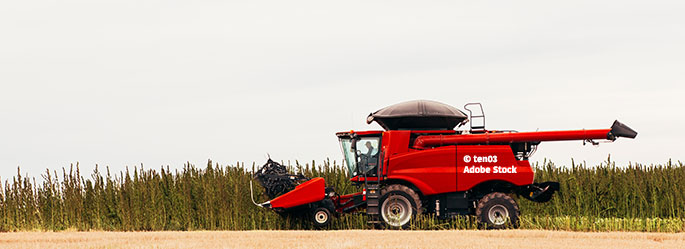
The 2018 Farm Bill has passed; environmentalists have been particularly watching the new provision allowing agricultural production of hemp. American has a hemp farming history that dates to Colonial times. It was criminalized in the 1950s, along with marijuana. Hemp is a plant that has many and varied uses in the textiles, food, pharmaceutical, and building material industries, and is known for using significantly less water than cotton and virtually no pesticides. It is considered enriching for poor soil.
When we lost the ability to farm hemp, the knowledge and support industries that provided processing died away. Those industries are coming back as the ability to source American-grown hemp has been improving with state-run research and agricultural programs. One industry very interested in using hemp is the bioplastics industry. But several challenges remain before sturdy hemp will replace other single-use bioplastics and before bioplastics will replace their cheaper petroleum-based cousins.
Current bioplastics are made from corn and soy, both crops that are heavily subsidized. These subsidies make their use in bioplastic production more cost effective. The environmental benefit is their ability to biodegrade with composting at specific temperatures and pressures.
Bioplastics are made by either the plant cellulose fibers or plant oil. Processes that use plant oil for plastic convert the plant’s natural short-chain fatty acids to the long-chain fatty acids needed for polymer formation. This can be an energy intensive process. Hemp oil is expensive to extract and is being used to make high-value products in both food and pharmaceuticals. The hemp cellulose fibers are being used in a number of industries that also have environmental concerns over products and processes: textile manufacturing and building materials.
Building materials such as Hempcrete blocks are using the unique properties of hemp to reduce the amount of concrete; known for being both strong and long-lasting, construction scientists are experimenting with using hemp fibers to reduce the amount of environmentally toxic materials. Their use in developing strength in bioplastics will enable the development of hemp bioplastics that can be used in cars and boats. If they will develop a new use in biodegradable bioplastics is questionable, however.
Hemp-based single-use biodegradable bioplastics would have to compete against both petroleum based single-use plastics and the bioplastics made from subsidized corn and soy. Realistically, the market is not prepared to pay a significant premium for hemp bioplastics when other bioplastics are available and less expensive.
Both industries that use hemp and the industries that develop around hemp processing will see a resurgence in the next few years as this sturdy, useful, and environmentally-friendly crop is once again grown in America.




































































































































 Three Ways to Engage Teams and Clients to Maximize Your Recycling Program Engagement
Three Ways to Engage Teams and Clients to Maximize Your Recycling Program Engagement  How to Integrate Accessibility Into Your Sustainability Planning
How to Integrate Accessibility Into Your Sustainability Planning  Why Park Benches Can Promote Workplace Well-Being
Why Park Benches Can Promote Workplace Well-Being 
